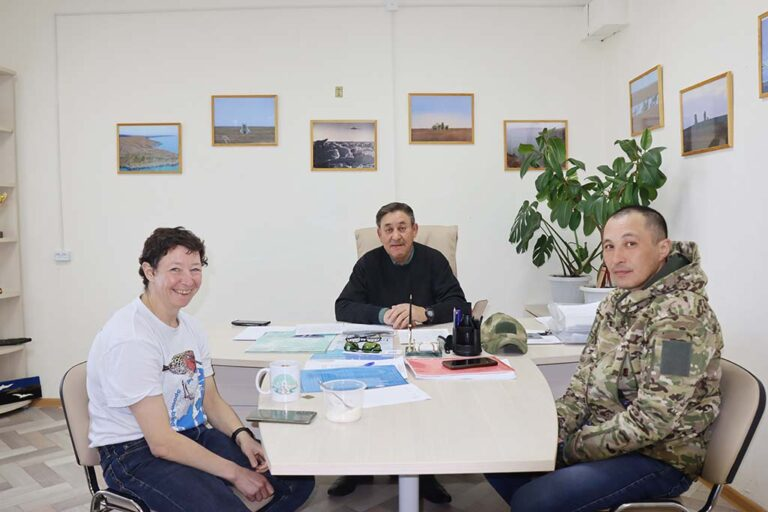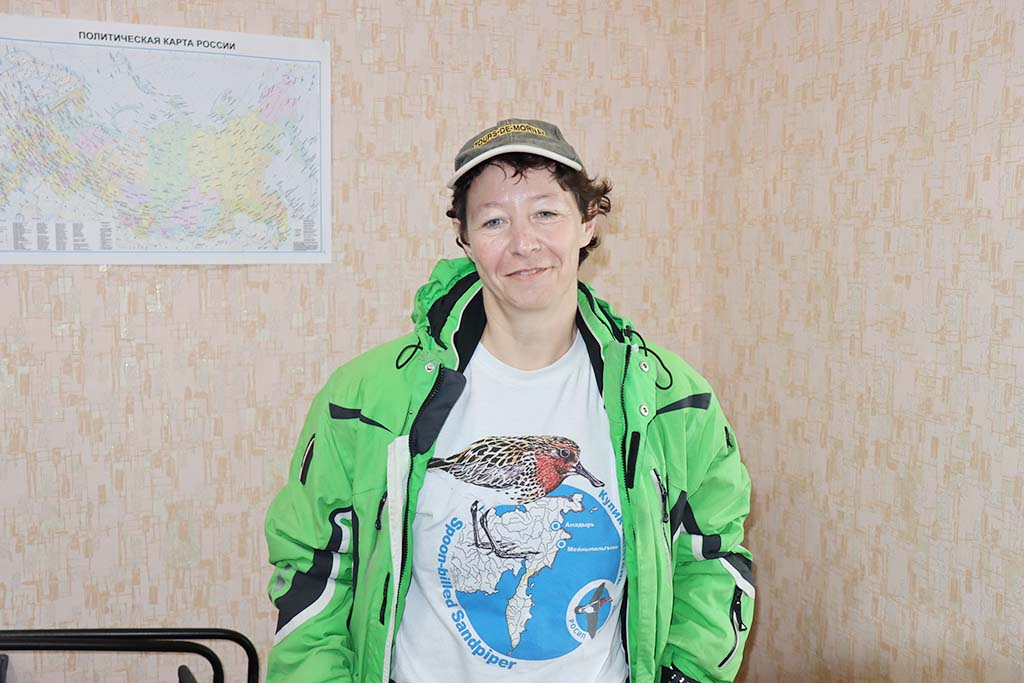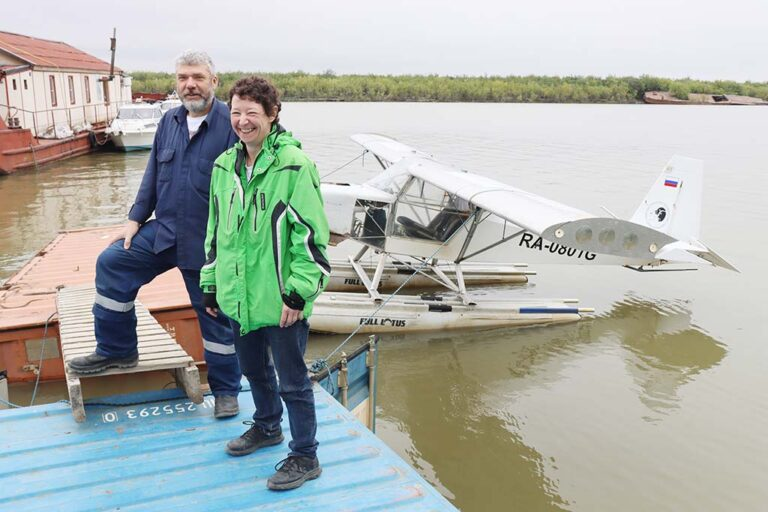
Candidate of Biological Sciences, researcher at the Center for Bird Ringing, A.N. Severtsov Institute of Ecology and Evolution RAS Sofia Rosenfeld worked in the Nizhnekolymsk region. She was helped by Georgy Kirtaev, who pilots a small amphibious aircraft.
Sofya Borisovna gave an interview to Kolymskaya Pravda about the process of her work.
— Sofya Borisovna, you have now returned from work on the eastern coast of Chukotka, tell us about your work?
— This year we worked together with the spoon-billed sandpiper project, already 22 years old as of this year. The work took place in southern Chukotka, near the village of Meinypilgyno. There are lakes there and you can say this is a unique place, there are also spoon-billed waders there, there are goose spots and we have always worked on them, but I would like to make a comprehensive expedition. This year we worked to survey this territory almost to the border with Kamchatka.
First of all, our attention was focused on the white goose. This species of geese is listed in the Red Book and has always been rare, and only in isolated areas of Chukotka was it found in any significant quantities. Why is it interesting? Almost 80% of this type of geese that we see comes to us from Alaska to molt. And it has always been important for scientists in Alaska to know how many white-necked geese fly there to molt, and how many to breed. We have now almost completed a joint project on three species of eiders and the white-necked goose.
— We carried out many flights to search for new groups of spoon-billed sandpiper. This unique bird is included in the Top 10 most endangered birds in the world. According to the most optimistic estimates, there are no more than 400 pairs left, and maybe less. They nest only in southern Chukotka. There is a known grouping of them near the village of Meinypilgyno, but it is very important to find other places. We use the plane to explore other areas that are not always accessible by boat or all-terrain vehicle. In general, the logistics here are very complex. And in one of these places we found nesting spoon-billed sandpipers and even marked them with rings. The work went well.
But we worked not only in southern Chukotka, but also in the Lower Anadyr Lowland. It is also an interesting goose and duck area. In Soviet times, ornithologists from the Magadan Institute worked there a lot, and it will be interesting to compare the data from those years and modern ones. Work on eiders was planned in the Chaunsky district, but unfortunately it didn’t work out - the group was stopped in Anadyr due to the weather. But I hope that next year we will carry out work there.

— Don’t predators hunt these unique birds?
— There are a lot of bears there, just a huge number, but they are focused either on discarded dead marine mammals or on fish.
— So they don’t pay much attention to birds?
— Well, why should they? It’s difficult to catch them, the birds are small, it’s easier to catch a fish or find a dead walrus and eat it.
— On the way from Chersky you plan to visit Bolshaya and Malaya Kuropatochya. Will you work on geese there too?
— In this area we are most interested in the lesser white-fronted goose. This is also a rather rare species, listed in the Red Book. These birds spend the winter in China, where they were tagged with transmitters, and all the signals that were received from them came from the area of Malaya Kuropatochyaya and slightly from Bolshaya Kuropatochyaya. It is necessary to see what is happening there and how many birds there are. Apparently in this area there is a molting center for this rare species. It turns out that this work is being carried out jointly with our Chinese colleagues.
— In Chersky you met with the management and inspectors of the Bear Islands Nature Reserve. Do you have any mutual interest?
— In fact, the reserve inspectors have very interesting observations on the mainland – Agafonovo and the surrounding area. A white goose nests there, there is a colony of black geese, and it’s also interesting that they found Siberian Cranes on the territory of the reserve. These are very rare species and this information is very valuable.
There is interest in this regard. I would like to note that the Bear Islands inspectors are very competent specialists. No matter how many inspectors I have seen at other reserves, there were none so competent. They know the area and birds well, and feel at home in the tundra. These are really working, thinking people and it’s very nice.
As for the Siberian Cranes, we know for sure that their numbers are increasing, we know from censuses in China. If the number grows, then the birds must spread somewhere throughout their range, especially since they are a territorial bird, they need large individual areas. Maybe this is the reason that they appeared in Lower Kolyma. Or another option is that no one has ever looked there before…
We worked there in 2020 and 2022 and saw Siberian Cranes. But we didn’t work specifically on them, we just noted their presence.
— You have been engaged in research work in the Arctic regions for many years, sometimes flying the same routes. In your opinion, are climate changes happening and are they affecting birds?
— I haven’t been alive long enough to say that. Long-term series of data and observation are needed. What we can say, and this can be seen with the naked eye, is that autumn has become warmer. I won’t talk about summer and spring; there have been both cold and warm seasons before. But autumn has definitely become warmer and this is very good for geese. The more geese sit in the tundra, the greater the chance that the chicks will have time to get stronger and become more prepared for long flights for the winter. That is, there are benefits for geese, but I think that warming is also good for cranes.

— You are now completing the summer stage of field work. How will the information received be processed in winter?
— I hope not in winter, but we’ll start in the fall. We have a photo bank, i.e. during flights we photograph all the birds. Next, we will identify them, count them, enter them into an open database, and anyone can view them. Perhaps an article will be written, but first we need to see what happened and think about it.
— Good luck and see you in Lower Kolyma next year!
Related materials:
Kolyma Pravda: “Scientists from Moscow are studying Arctic birds”
